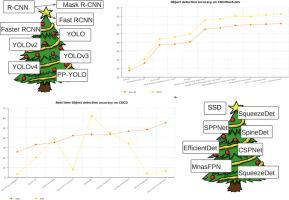Journal of Advanced Research ( IF 11.4 ) Pub Date : 2021-04-23 , DOI: 10.1016/j.jare.2021.03.015 Andrei-Alexandru Tulbure 1, 2 , Adrian-Alexandru Tulbure 3 , Eva-Henrietta Dulf 1

|
Background
Over the last years Deep Learning has shown to yield remarkable results when compared to traditional computer vision algorithms, in a large variety of computer vision applications. The deeplearning models outperformed in both accuracy and processing time. Thus, once a deeplearning models won the Image Net Large Scale Visual Recognition Contest, it proved that this area of research is of great potential. Furthermore, these increases in recognition performance resulted in more applied research and thus, more applications where deeplearning is useful: one of which is defect detection (or visual defect detection). In the last few years, deeplearning models achieved higher and higher accuracy on the complex testing datasets used for benchmarking. This surge in accuracy and usage is also supported (besides swarms of researchers pouring into the race), by incremental breakthroughs in computing hardware: such as more powerful GPUs(Graphical processing units), CPUs(central processing units) and better computing procedures (libraries and frameworks).
Aim of the review
To offer a structured and analytical overview(stating both advantages and disadvantages) of the existing popular object detection models that can be re-purposed for defect detection: such as Region based CNNs(Convolutional neural networks), YOLO(You only look once), SSD(single shot detectors) and cascaded architectures. A further brief summary on model compression and acceleration techniques that enabled the portability of deeplearning detection models is included.
Key Scientific Concepts of Review
It is of great use for future developments in the manufacturing industry that many of the popular, above mentioned models are easy to re-purpose for defect detection and, thus could really contribute to the overall increase in productivity of this sector. Moreover, in the experiment performed the YOLOv4 model was trained and re-purposed for industrial cable detection in several hours. The computing needs could be fulfilled by a general purpose computer or by a high-performance desktop setup, depending on the specificity of the application. Hence, the barrier of computing shall be somewhat easier to climb for all types of businesses.
中文翻译:

使用 DCNN(深度卷积神经网络)的现代缺陷检测模型综述
背景
过去几年,与传统计算机视觉算法相比,深度学习在各种计算机视觉应用中已显示出显着的成果。深度学习模型在准确性和处理时间方面都表现出色。因此,深度学习模型一旦赢得了Image Net大规模视觉识别竞赛,就证明了这一研究领域具有巨大的潜力。此外,识别性能的提高导致了更多的应用研究,从而催生了更多深度学习有用的应用:其中之一就是缺陷检测(或视觉缺陷检测)。在过去几年中,深度学习模型在用于基准测试的复杂测试数据集上取得了越来越高的准确性。计算硬件的渐进突破也支持了准确性和使用率的激增(除了大量研究人员涌入竞争之外):例如更强大的 GPU(图形处理单元)、CPU(中央处理单元)和更好的计算程序(库)和框架)。
审查目的
提供现有流行目标检测模型的结构化和分析性概述(说明优点和缺点),这些模型可以重新用于缺陷检测:例如基于区域的 CNN(卷积神经网络)、YOLO(你只看一次)、 SSD(单次探测器)和级联架构。其中还包含有关模型压缩和加速技术的进一步简要总结,这些技术使深度学习检测模型具有可移植性。
审查的关键科学概念
上述许多流行的模型很容易重新用于缺陷检测,这对于制造业的未来发展非常有用,因此可以真正促进该行业生产率的整体提高。此外,在进行的实验中,YOLOv4 模型在几个小时内完成了训练并重新用于工业电缆检测。计算需求可以通过通用计算机或高性能桌面设置来满足,具体取决于应用程序的特殊性。因此,对于所有类型的企业来说,计算的障碍应该更容易跨越。











































 京公网安备 11010802027423号
京公网安备 11010802027423号